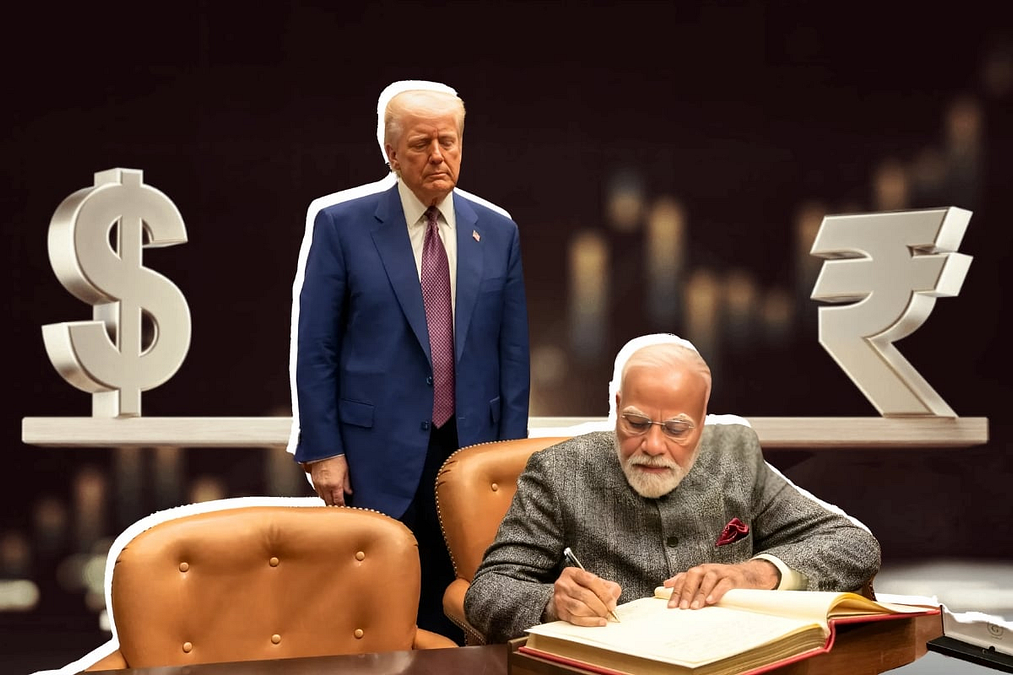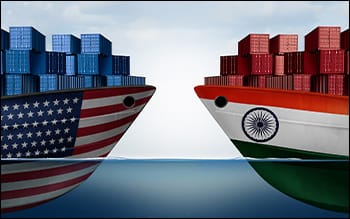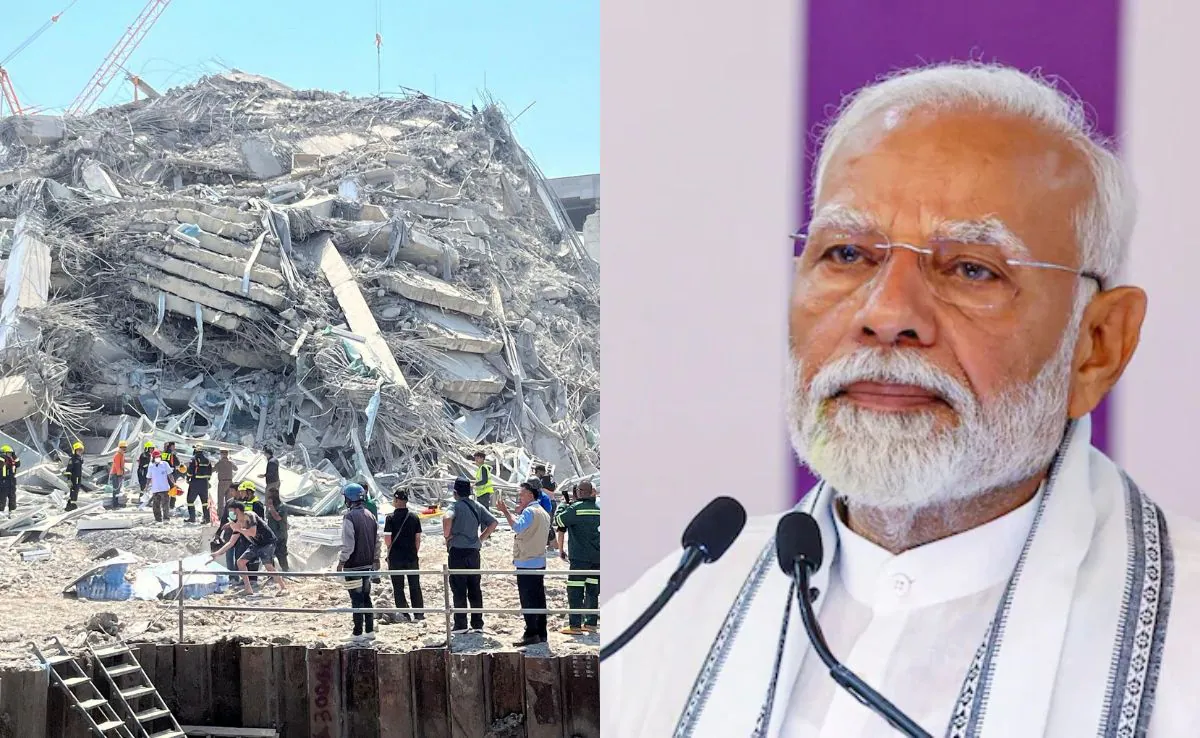
U.S. President Donald Trump’s announcement of reciprocal tariffs on multiple countries triggered sharp declines across global markets. However, for India, this seemingly protectionist move could turn out to be unexpectedly advantageous. Given the significant contribution of the services sector to India’s GDP, the country is relatively insulated from the direct effects of these tariffs. As a result, the long-term negative impact of the U.S. tariff policy on India’s economy is expected to be limited, while it may open up new avenues for trade realignment and economic growth.
A key pillar of President Trump’s ‘Make America Great Again’ agenda is to curb China’s growing dominance, as it stands as the United States’ primary competitor in global markets. In line with this objective, the U.S. has imposed a steep 34% tariff on Chinese goods. This move is expected to create significant hurdles for foreign investors operating in China. In such a scenario, India emerges as a strong and viable alternative, offering a more stable and promising environment for global investors seeking to diversify their presence in Asia.
For instance, following Trump’s tariff announcement, China’s Vice Commerce Minister firmly stated that China would not be intimidated by such threats and is fully prepared to respond if the U.S. initiates a trade war. Earlier, President Trump warned on social media that if China fails to reverse the recently increased 34% tariff, along with its existing duties on American goods, an additional 50% tariff would be imposed starting Wednesday, April 9, 2025. These escalating tensions and aggressive statements are fueling uncertainty among foreign investors in China. Reflecting this shift in sentiment, reports have surfaced that Apple is planning to relocate its iPhone production units to India, signaling a potential shift in global manufacturing strategies.
Despite tariff tensions, India and the U.S. are actively working toward a fair and balanced Bilateral Trade Agreement, expected to conclude by fall 2025. The deal aims to cover both goods and services, offering a win-win outcome and potential tariff relief. This move could boost economic ties, attract investment, and strengthen India’s global trade position. This would relieve India from tariff pressures while also deepening strategic and economic ties with the U.S.
Due to the steep tariffs imposed on countries like Vietnam, Taiwan, and Bangladesh, global manufacturers from these nations are expected to pivot towards India, giving a much-needed boost to the Indian market. This shift could mark the beginning of a significant recovery phase for India’s trade and industry. India’s export portfolio to the U.S. is heavily dominated by pharmaceuticals and IT services. Since the recently introduced tariffs apply only to goods and not to services, India’s IT exports remain unaffected. Furthermore, as per the White House Fact Sheet, these tariffs will not apply to India’s pharmaceutical sector either. As a result, the overall impact on India’s export performance is likely to be minimal.

At the same time, the likelihood of industries such as electronics from China, garments from Vietnam, footwear from Taiwan, and textiles from Bangladesh relocating to India is steadily increasing. This potential industrial migration will not only contribute positively to India’s GDP but also accelerate its export growth, positioning the country as a rising hub for global manufacturing and trade.
The growing uncertainty is already taking a toll on China’s toy industry, which is witnessing a significant downturn. In contrast, India’s toy sector is poised to capitalise on this opportunity and make major strides. Every setback China experiences indirectly translates into gains for India, be it for domestic investors, foreign investors eyeing India, or the broader Indian economy. While the toy industry is clearly on the rise, the potential relocation of Apple’s manufacturing from China to India would be a landmark strategic victory. Such a move could trigger a domino effect, encouraging a wave of global industries to shift their operations to India, positioning the country as a new hub for global manufacturing. From a direct standpoint, while the U.S. has imposed a 26% tariff on Indian goods exports, it’s worth noting that goods account for only around 10% of India’s total exports to the U.S. Given that over 65% of India’s GDP is service-based, a large portion of its exports comes from the services sector. Crucially, the tariffs introduced by President Trump target only goods, not services. This means the overall impact on India’s economy would be minimal, affecting just about 2%. Looking at the bigger picture, what may initially seem like a trade crisis triggered by Trump’s tariff policies could actually open up a world of unforeseen and limitless opportunities for India.

